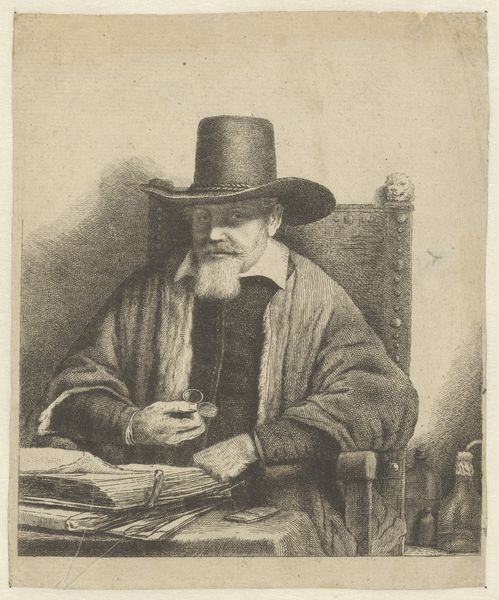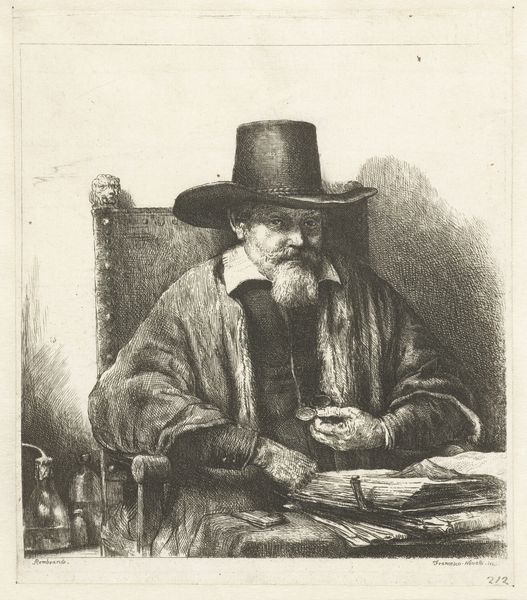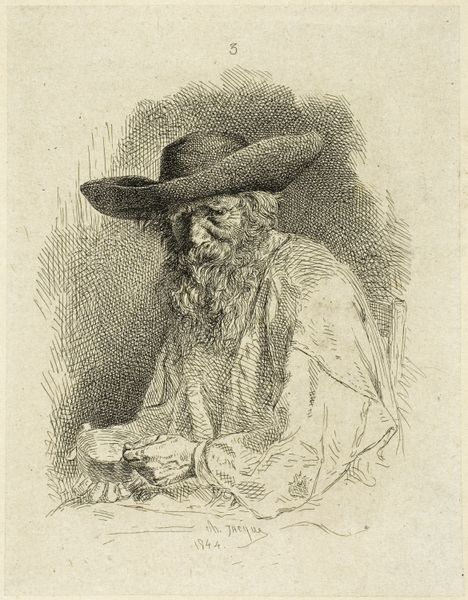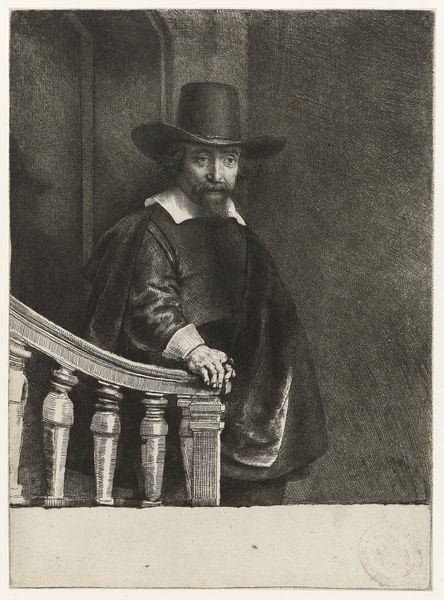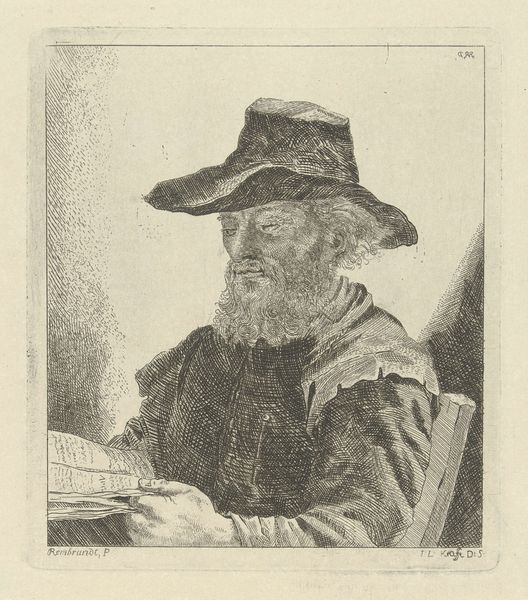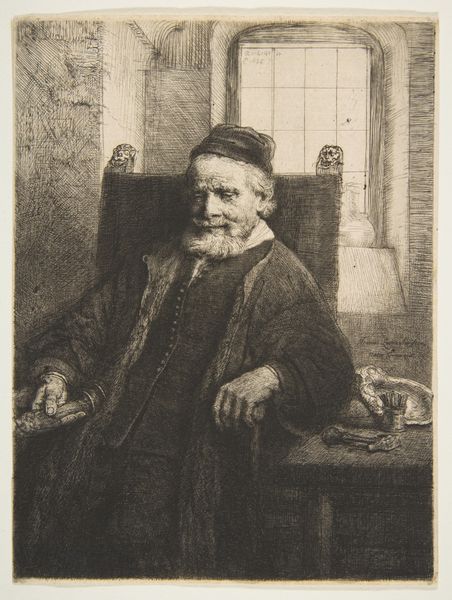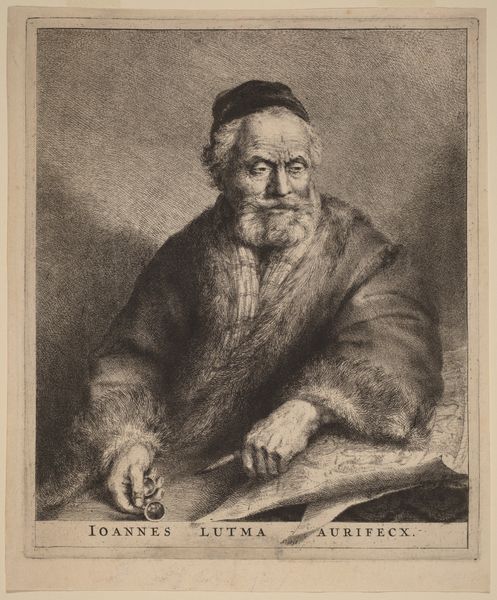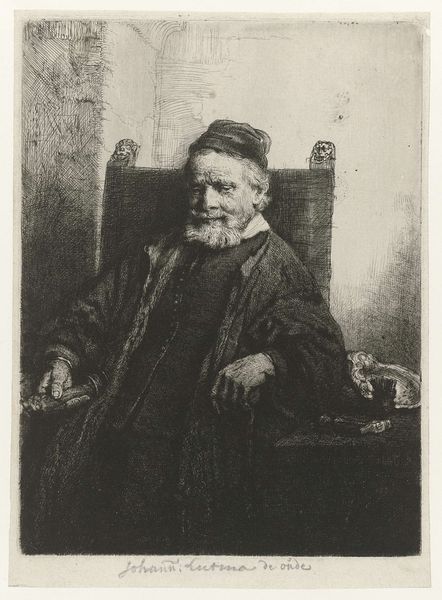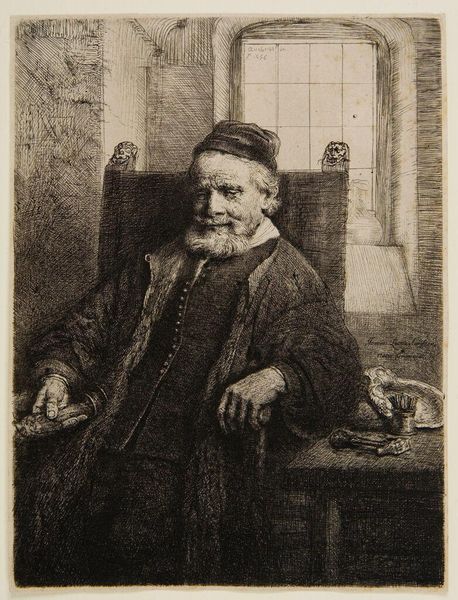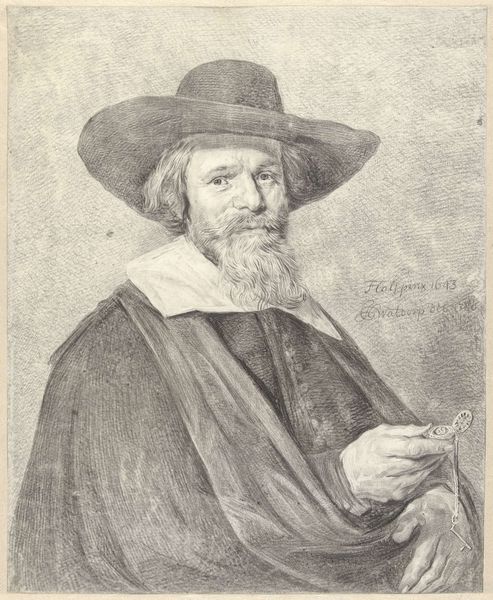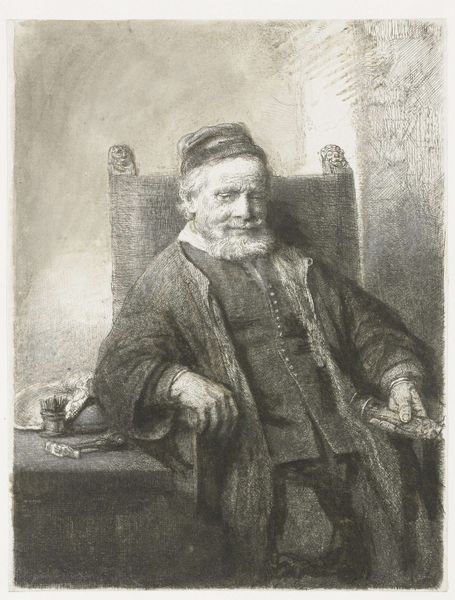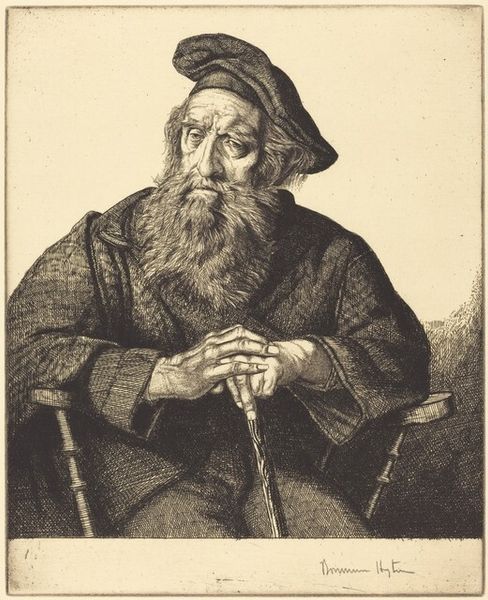
print, etching
#
portrait
#
baroque
# print
#
etching
#
charcoal drawing
#
figuration
#
genre-painting
Copyright: Public domain
This print of Arnold Tholinx, made by Rembrandt van Rijn in the 17th century, shows how a traditional artistic process can reveal a lot about society. Rembrandt used etching, a printmaking technique where lines are incised into a metal plate with acid, to create this image. The acid eats away at the metal, leaving grooves that hold ink. This print was made by pressing paper against the inked plate. What’s so interesting is how the act of printmaking - which by definition involves the multiple, the copy, the distribution of images - meets the subject of the image. Tholinx was an important figure in the Dutch Golden Age. As an inspector of the Collegium Medicum, he maintained standards for apothecaries and controlled the quality of medicines. He would have been at the center of a growing culture of scientific rationalism. Rembrandt captured the values of a changing world, but he also brought a master craftsman’s sensibility to the task.
Comments
No comments
Be the first to comment and join the conversation on the ultimate creative platform.
